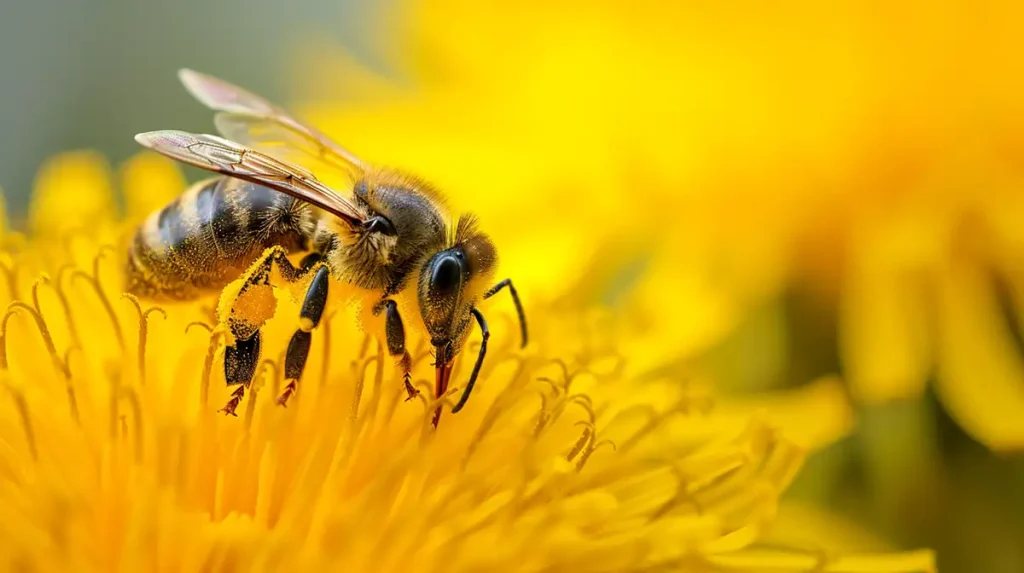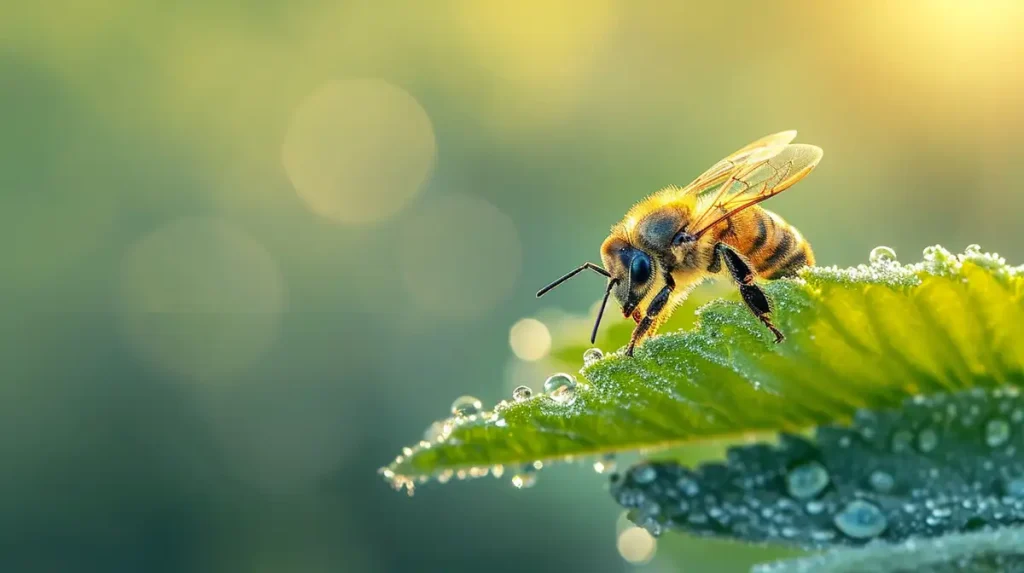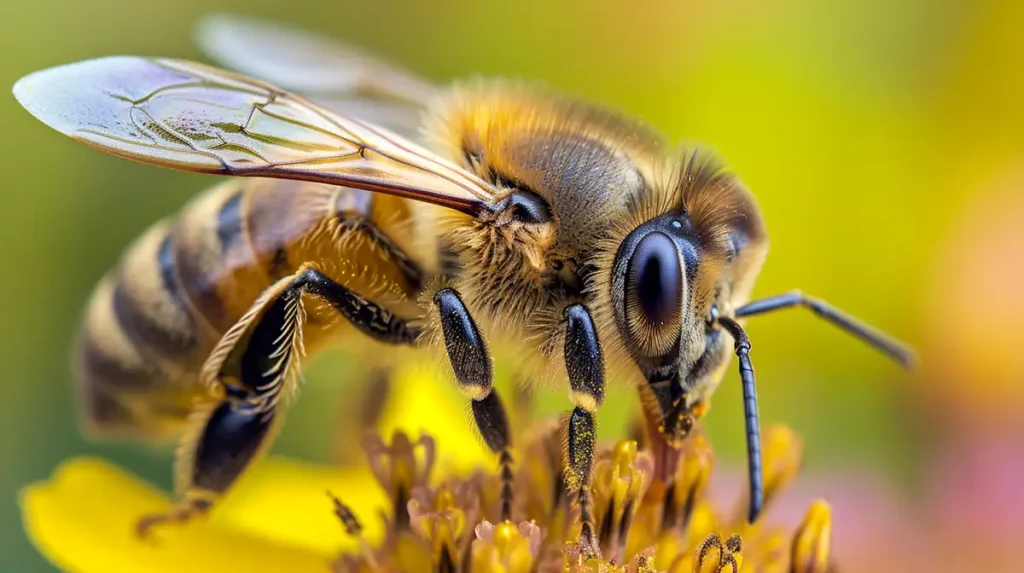Table of Contents
The lifespan of a bee can vary significantly, depending on the species and role within the colony. Worker honeybees, for instance, live about 6 weeks during the active summer months, but their life can extend to several months if they are overwintering. Queen bees enjoy a longer lifespan, typically 2 to 5 years, due to their specialized diet and protected environment within the hive. In contrast, male drones live a much shorter life, usually only a few weeks, and die shortly after mating. Other bee species, such as solitary bees, also have varying lifespans that depend on their environmental conditions and biological traits.
In the below paragraphs, we will take a more detailed look at this topic.
The many different creatures found on planet Earth have varying life cycles. They also have different lifespans. Human beings tend to live 70 to 80 years, on average. Dogs max out somewhere between 10 and 15 years. Then there are certain species of tortoises that can live for more than a hundred years. It is amazing. But what about bees?
No need to worry if you have never given a bee’s lifespan any thought. Bees are not something we typically think about until there is a nest too close to home. Nonetheless, you may be surprised to learn just how short a bee’s lifespan is. Most bees do not live for years.
Variations by Species
It is hard to come up with a number of weeks or months and say all bees live that long. Things are not so simple in the bee world. Right off the bat, there are hundreds of different bee species. Within those species there is plenty of variation, and some species live longer than others. And even within a single species, there are different castes with longer and shorter lifespans.
Do not forget environmental factors, either. A bee’s lifespan can be affected by everything from temperature to predation and food availability. That said, what you read in the remainder of this article will be based on averages. Bees can live for longer or shorter periods of time. Also note that unless specified, average lifespans refer to honeybees.

Queen Bee Lifespan
Almost all bee species exist in colonies with caste systems. Even solitary bees with nests consisting of just a single generation are divided into castes. There are three of them: queens, workers, and drones. The queen is the most important bee in any hive.
Honeybee queens are unusual in the bee world in that they can live anywhere from 3 to 5 years. Assuming disease, drought, or other external influences do not end a queen’s life prematurely, she is kept alive for an extended amount of time by a dedicated group of workers who make sure she is well fed during the summer months and kept warm during the winter.
Having queens with such long lifespans explains why honeybees are as prolific as they are. Other species, whose queens die after a year, do not tend to breed as prolifically.
Worker Bee Lifespan
The lifespan of a worker bee really depends on when it emerges from the pupa stage to adult maturity. Worker bees hatch during the spring and summer months and typically live for six or seven weeks. They spend the first half of their lives working in the nest and the second half gathering nectar and pollen.
Workers born during the fall can live for up to six months. That’s because hives go into a semi-hibernation state in which activity is severely limited. The main goal during the winter months is to keep the queen warm. All the bees will huddle in one place, combining their body heat to make sure the queen lives.
Drone Bee Lifespan
Drones are male bees that emerge from unfertilized eggs. They have but one task: to fertilize queens. A queen will mate dozens of times at the start of the mating season, then return to the hive where she will lay eggs for months at a time. Unfortunately for him, a drone’s usefulness comes to an end once mating is complete. Drones are kicked out of the hive at that point.
- Carter, Anthony (Author)
- English (Publication Language)
- 194 Pages - 02/28/2024 (Publication Date) - Independently published (Publisher)
The way the system is set up ultimately results in drones only living for a few weeks. They either die of starvation or fall victim to predation. Drones can live for up to four months under ideal conditions, but that is not the norm.
Bee Lifespan After a Sting
You have probably heard that bees die after stinging. That is only partially true. The first thing to note is that only honeybees die after stinging. And even at that, it is only worker bees. Drones cannot sting as they lack the physical mechanics to do so. As for queens, they can survive multiple stings without issue.
So what’s the deal with worker bees? Unfortunately for them, their stingers are barbed. An inserted stinger is difficult to remove from the tissue into which it is embedded. So as the worker bee pulls away, it ends up leaving behind the stinger and part of its abdomen. This results in an abdominal rupture that kills the bee rather quickly.
Bee Lifespan Without Food
Given that a honeybee’s natural lifespan is so short compared to humans, it stands to reason that bees cannot survive very long without food. But how long does it take for a bee to starve to death? Not very long.
A bee with a full stomach can only remain active for about an hour, after which time it either has to feed again or ground itself. Grounded bees are obviously in danger of starvation because they cannot get to their primary food source: flowering plants. It only takes a couple of hours for lack of food to kill a typical bee.

Bumblebee Lifespan
Workers and drones in a bumblebee colony exhibit average lifespans similar to their honeybee counterparts. Workers tend to live for about six weeks on average, unless they are born in the fall. Drones rarely last for more than a couple of weeks. If they emerge from a nest in the fall months, drones will not make it until winter.
The big difference with bumblebees is the queen. Where a honeybee queen can live for up to five years, a queen bumblebee lives for about a year. Queens are normally born in late summer or early fall. They hibernate for the winter and then emerge in the spring to begin laying eggs. By the time a new queen is ready to take over the hive, the old queen is ready to die.
Carpenter Bee Lifespan
It’s a bit more difficult to offer an average lifespan for carpenter bees given that they are solitary in nature. Rather than building large, social hives consisting of tens of thousands of bees, carpenter bees tend to isolate themselves in nests that contain no more than one generation. However, even that is not guaranteed. Some carpenter bees emerge from the nest in which they were born and live the rest of their lives solitarily.
On a positive note, male carpenter bees have an average lifespan of about a year. Female carpenter bees can live longer. They often do, especially when queens and their daughters establish their own exclusive nests. These collective nests increase survivability by taking advantage of numbers.
In a cooperative nest, the primary queen lays all the eggs and rears the young by herself. All the other females act as subordinate queens. Their main job is to protect the nest against parasites, predators, etc. Interestingly enough, the primary queen only lives for about one year. All the work involved in birthing and raising young takes everything out of her.
On the other hand, subordinate queens can live up to three years. When a primary queen dies, one of the subordinates inherits the nest. The new primary queen then typically dies the following year.
What is the Lifespan of a Bee – Conclusion
The lifespan of a bee is a complex and multifaceted topic. While the average lifespan of a worker bee is often cited as 4-6 weeks there are many factors that can influence this timeframe, including genetics, environment, and the role of the individual bee within the hive. It is also important to note that while individual bees may have relatively short lifespans, the colony as a whole can endure for much longer periods of time. As beekeepers and members of the wider community, it is essential that we continue to learn about and respect the vital role that bees play in our ecosystem and work to support their health and wellbeing wherever possible. By doing so, we can help ensure the continued survival of these incredible creatures for generations to come.
Looking to up your beekeeping game? Check out our latest product recommendations so you can take things to the next level!
Introducing The Top 12 Best Beekeeping Veils For 2024
Introducing The Top 20 Best Beekeeping Gloves For 2024
Introducing The Absolute Best Beekeeping Suits For 2024
The 15 Top Beekeeping Books for 2024
The Top 11 Honey Extractors for 2024
The Top 12 Mason Bee Houses for 2024
Last update on 2024-04-17 / Affiliate links / Images from Amazon Product Advertising API


